For ants, termites and small vertebrates please see the first post page of the Tropical Rainforest subject.
"Unconventional" Invertebrates
Duliticola sp, a female trilobite beetle
Duliticola sp, a female trilobite beetle
A velvet worm which is of course not a worm
A velvet worm which is of course not a worm
A velvet worm which is of course not a worm
A slug or a snail without the protective shell
A common forest snail, this one has a flat spiral aka ram horn shell.
A less common small spiral shell snail
Ribbon worm
Land Planarian or flatworm
Land Planarian or flatworm
A giant pill millipede Hyleoglomeris sp.
A giant pill millipede Hyleoglomeris sp.

A giant pill millipede Hyleoglomeris sp.
A giant pill millipede Hyleoglomeris sp. the size of a golf ball when rolled up
Pill millipede
Pill millipede
Pill millipede
Pill millipede
Pill millipede
Pill millipede
Pill millipede
Pill millipede
Giant sow bug
Millipede, Thyropygus sp.
Two millipede post mating
A common centipede brooding its clutch of eggs
Thereuopoda longicornis, the long limbs "cave" or "house" centipede
This is a larger species than the one below. This is one of the most commonly found genus of centipede with several slightly differing species. This is the largest and the one below one of the larger. The larger are shorter (TL) than the smaller species.
At around 1 centimeter this tiny centipede is already a mother.
This is a larger species than the one below. This is one of the most commonly found genus of centipede with several slightly differing species. This is the largest and the one below one of the larger. The larger are shorter (TL) than the smaller species.
At around 1 centimeter this tiny centipede is already a mother.
The nymph or larva of the praying mantis, Metallyticus splendidus.
Larva of a praying mantis, Odontomantis sp.
A small 2 centimeters Praying mantis, do they get any smaller than this adult Praying mantis.
Despite its small (2 centimeter) size this mantis is colorfully clothed.
Despite its small (2 centimeter) size this mantis is colorfully clothed.
Despite its small (2 centimeter) size this mantis is colorfully clothed.
The Praying mantis Amorphoscelis sp wearing camouflage can you see it.?
A 3 centimeter (30 mm) ‘cockroach’ mantis Amorphoscelis sp wearing camouflage fatigues.
Small and with small grappling limbs this mantis (Amorphoscelis sp.) target small prey such as ants and other small arthropods.
A small species measuring less than 2 centimeters (TL 18 mm) . Another ‘cockroach’ mantis Amorphoscelis sp of the same genus as above. This one wearing a different camouflage fatigues. With this species (as also with many species of arthropods) the color pigmentation is dependent on where the larvae (or nymph) resides when it molts.
This common species is approximately 8 (female, males are smaller) centimeters.
A 6 centimeter long Praying mantis
A white 7.5 centimeters long and thin Praying mantis. This one is probably a fluke in Darwinian Evolution standing out like a sore thumb in the Rainforest background.
A white 75 millimeters long Praying mantis.
Despite its small (2 centimeter) size this mantis is colorfully clothed.
Despite its small (2 centimeter) size this mantis is colorfully clothed.
Despite its small (2 centimeter) size this mantis is colorfully clothed.
The Praying mantis Amorphoscelis sp wearing camouflage can you see it.?
A 3 centimeter (30 mm) ‘cockroach’ mantis Amorphoscelis sp wearing camouflage fatigues.
Small and with small grappling limbs this mantis (Amorphoscelis sp.) target small prey such as ants and other small arthropods.
A small species measuring less than 2 centimeters (TL 18 mm) . Another ‘cockroach’ mantis Amorphoscelis sp of the same genus as above. This one wearing a different camouflage fatigues. With this species (as also with many species of arthropods) the color pigmentation is dependent on where the larvae (or nymph) resides when it molts.
A 6 centimeter long Praying mantis
A white 7.5 centimeters long and thin Praying mantis. This one is probably a fluke in Darwinian Evolution standing out like a sore thumb in the Rainforest background.
A white 75 millimeters long Praying mantis.
Larva of Praying Mantis
Larva of Praying Mantis
A mid size Praying Mantis
Large jungle scorpion
Small scorpion.
Small scorpion
Small scorpion commonly found under bark of tree trunks
Tiny scorpion.

Small scorpion commonly found under bark of tree trunks
Tiny scorpion.

Pseudoscorpion
A vinegaroon or whipscorpion. Typopeltis sp. clutching her eggs.
A large ground dwelling spider
Huntsman spider.
Water slider spider, Thalassius sp.
Running wolf spider
Ambush spider
Ambush spider Lyssomanes sp. (Salticidae)
Ambush spider
Huntsman spider
Running wolf spider
Ambush spider
Ambush spider Lyssomanes sp. (Salticidae)
Ambush spider
Huntsman spider
A silver jumping spider, Epeus sp.
Jumping spider, Epeus sp.
A golden jumping spider Phintella sp.
Jumping spider
An ant mimic spider
An ant mimic spider
Ant mimic spider. This one mimics golden gaster Polyhachis ants.
Harvestman spider
Spider, Nephila sp.
Spider, Nephila sp., the male. Male web spinning spiders are usually tiny when compared with the female.
Spider, Nephila sp.
Spider, Nephila sp., the male. Male web spinning spiders are usually tiny when compared with the female.
Spider, Nephila sp.
Spider, Gasteracantha sp. The protruding 'horns' are probably a defensive mechanism against wasp the main predator of spiders. The mechanism serves as a deterrent telling the wasp that the spider will not be able to fit into the incubation nest of the wasp. Species with shorter 'horns' or 'spines' are sometimes still taken by wasps only be abandon because the wasps could not push the spiders through the opening of the nest.
Spider, Gasteracantha sp.
Spider, Gasteracantha sp.
Castianeira sp.
Spider, Argiope sp.

The majority of mites are tiny to almost microscorpic. A few are as large as small spiders.
Mites.

Mites
The majority of mites are tiny to almost microscorpic. A few are as large as small spiders.
Mites.
Colorful cockroaches
Wood eating cockroach
Wood eating roaches (above and below) are characterized by shorter antennae and generally are life bearers and are not eggs layers.
This look like the common large 'house' cockroach aka Asian cockroach and though similar in size is actually a variant forest species.
Wood eating cockroach, this subadult is very flat.
A large black cockroach not too unusual except...
.....the antennae are 'beaded' like those of termites and many beetles.
This look like the common large 'house' cockroach aka Asian cockroach and though similar in size is actually a variant forest species.
Wood eating cockroach, this subadult is very flat.
A large black cockroach not too unusual except...
.....the antennae are 'beaded' like those of termites and many beetles.
Sap Suckers
Larva of shield bugs
Larva of shield bugs
Larva of shield bugs in last instar.
Shield bug guarding her eggs.
Plant Hopper a sap sucker
Hopper
Hopper
Hopper
Hopper
Hopper. Sap sucking hoppers are called (plant) hoppers because they hop. Obviously. Not too sure about the 'plant' part as I am sure they don't hop over plant, nor are they a type of 'plant'.
Sap sucking plant hopper


Shield bug guarding her eggs.
Plant Hopper a sap sucker
Hopper
Hopper
Hopper
Hopper
Hopper. Sap sucking hoppers are called (plant) hoppers because they hop. Obviously. Not too sure about the 'plant' part as I am sure they don't hop over plant, nor are they a type of 'plant'.
Sap sucking plant hopper


Cryptolaemus are predators of mealy bugs
Sap sucker that does not hop. Are they still call hoppers? Hope not, otherwise we will all be very confused.
Nymphal or larva stage of above sap sucker that do not hop.
Sap sucker.
Another species still, of sap sucker.
Nymphal or larva stage of above sap sucker that do not hop.
Sap sucker.
Another species of sap sucker.
Another species still, of sap sucker.
Assassin bugs
Assassin bug mimicking a Diacamma ant.
Assassin bug in camouflage
Assassin bug building camouflage with sand grains
Assassin bug assassinating.
Stick Insect
Stick insect female. Is this a stick that became an insect or an insect that became a stick?
Stick insect female.
Stick insect female.
Caterpillar
Hairy caterpillar
Hairy caterpillar
Hairy caterpillar
Hairy caterpillar
Hairy caterpillar
Hairy caterpillar
Hairy caterpillar
Hairless caterpillar
Beetles
A beetle decorated with sparkles

A beetle dressed in sparkles and appeared to love being eaten or is it just daring anyone to eat it?

A pair of long horn beetles mating on a fallen tree
A pair of long horn beetles mating on a fallen tree
A pair of long horn beetles mating on a fallen tree
Long horn beetles
Long horn beetles

Long horn beetles

Long horn beetles
Long horn beetles
Olenecamptus bilobus Fabricius

Long horn beetles

Beetle
Beetle
Beetle. Yellow dotted or lined pattern is like a universal color in insect that says, 'I am poisonous'.
Beetles
More beetles.

Beetle. Yellow dotted or lined pattern is like a universal color in insect that says, 'I am poisonous'.
Beetles
More beetles.

Beetle
This beetle is half the size of the one above. A smaller verson of the above beetle or another mimicry
This beetle is half the size of the one above. A smaller verson of the above beetle or another mimicry
Beetle
Tiger beetle
Neocollyris
Tiger beetle.
Tiger beetle
Tiger beetle
Tiger beetle
Tiger beetle
These are all the same species but each individual has their own colors and color pattern
Tiger beetle.
Neocollyris
Tiger beetle.
Tiger beetle
Tiger beetle
Tiger beetle
These are all the same species but each individual has their own colors and color pattern
Tiger beetle.
Beetle Trachelophorus sp.
Beetle

Beetle antennae opened
Beetle
Beetle (this looks like a color morph of the one above)
Beetle
Beetle.
Velvety beetle
Beetle, Hoshihananomia
Male and female dung beetle in their labor for procreation.
Beetle
Beetle antennae closed

Beetle antennae opened
Beetle
Beetle (this looks like a color morph of the one above)
Beetle
Beetle.
Velvety beetle
Beetle, Hoshihananomia
Male and female dung beetle in their labor for procreation.
Orthoptera
Most grasshoppers are poor flyer but not this species, Erianthus sp., and of course not all grasshoppers hop on grass.
Erianthus sp., before it becomes an accomplish flyer it must stay inconspicuous.
Most grasshoppers are poor flyer but not this species, Erianthus sp.
Most grasshoppers are poor flyer but not this species, Erianthus sp.
Erianthus sp., before it becomes an accomplish flyer it must stay inconspicuous.
Most grasshoppers are poor flyer but not this species, Erianthus sp.
Most grasshoppers are poor flyer but not this species, Erianthus sp.
Grasshopper
Grasshopper
Grasshopper the nymph (above) imago (below)
Grasshopper
Various instar of same species.
Grasshopper
Grasshopper
Grasshopper
Grasshopper
Grasshopper
Grasshopper
Giant grasshopper
Grasshopper or rather 'Mosshopper'. These grasshoppers have upward facing eyes and frequent fallen tree trunks and large boulder size rocks.
This specimen found in a different forest has a slight color pattern variation from the specimen in the photo above.
Grasshopper
Grasshopper the nymph (above) imago (below)
Grasshopper
Various instar of same species.
Grasshopper
Grasshopper
Grasshopper
Grasshopper
Grasshopper
Grasshopper
Giant grasshopper
Grasshopper or rather 'Mosshopper'. These grasshoppers have upward facing eyes and frequent fallen tree trunks and large boulder size rocks.
This specimen found in a different forest has a slight color pattern variation from the specimen in the photo above.
Grasshopper or rather lichen hopper, these feeds on moss and lichen
Grasshopper or rather lichen hopper, these feeds on moss and lichen
Grasshopper or rather lichen hopper, these feeds on moss and lichen
Grasshopper or rather lichen hopper, these feeds on moss and lichen
Grasshopper or rather lichen hopper, these feeds on moss and lichen
Cricket
Cricket
Cricket (this large cricket is commercially cultured as food for aquarium fish)

Cricket
Camel cricket, reported to be an invasive species in the U.S.
Mole cricket
Mole cricket
Mole cricket, a small species. The imago at 4 millimeters (TL). In mole crickets the front limbs are modified into clawed digging hands. In this species the hind limbs too are modified for hopping.
This is a large Katydid at around 7 cm
Another large Katydid also around 7 cm

Katydid.

Cricket
Cricket (this large cricket is commercially cultured as food for aquarium fish)

Cricket
Camel cricket, reported to be an invasive species in the U.S.
Mole cricket
Mole cricket
Mole cricket, a small species. The imago at 4 millimeters (TL). In mole crickets the front limbs are modified into clawed digging hands. In this species the hind limbs too are modified for hopping.
This is a large Katydid at around 7 cm
Another large Katydid also around 7 cm

Katydid.

Diptera
Webflies (imago of bloodworm)
Webflies
Robberfly
Robberfly
Robberfly
Large Robberfly
Large Robberfly
Large Soldier fly
Soldier fly
Soldier fly
This looks fairly similar to the one in the photo above but with significant variations.
With some wasp curling the antennae is a fashion statement.
And as with all things fashion (and also religion), it must be taken to the extreme.
Spider hunter. Main prey to wasp species of this location other than parasitoid wasp, are spiders, caterpillars and cockroaches (in that order).
Newly eclosed solitary wasp.
A wasp that mimics Tetraponera rufonigra ants.
Parasitoid wasp.
Large wasp.
Large wasp.

Solitary spider predator wasp. Incubation nest of a solitary wasp that prey on spiders. The nest is made from tree resin (amber). Shown here is another spider feeding on a spider immobilized by the wasp but was too big to fit into the opening to the incubation nest.
Velvet wasp
Robberfly
Large Robberfly
Large Robberfly
Large Soldier fly
Soldier fly
Soldier fly
Wasp
In this wasp the 'waist' broadens towards the end where it is joined to the abdomen proper. In ants this anomaly in the waistline is called the petiole and in wasp it is called the notiole (I am kidding).
A wasp with a petiole?
A potter wasp with a 'waist' that broadens slightly towards the posterior.
In this wasp the broadening of the waist where it joins with the rest of the abdomen proper is more pronounced than in the porter wasp above.
And as with all things fashion (and also religion), it must be taken to the extreme.
Spider hunter. Main prey to wasp species of this location other than parasitoid wasp, are spiders, caterpillars and cockroaches (in that order).
Newly eclosed solitary wasp.
A wasp that mimics Tetraponera rufonigra ants.
Parasitoid wasp.
Large wasp.
Large wasp.
Wasp leading a cockroach it had immobilized to use as incubator and food for its baby.
Parasitoid wasp.
Parasitoid wasp.
Parasitoid wasp.
Ichneumon parasitoid wasp
Wasp nest under a tree trunk.
Wasps nesting along a tree trunk. The upward facing semi-circular column nest serves to deflect rain rundown. Question is, is this one colony or multiple sibling colonies?

A stingless bee collecting tree resin.
Stingless Wax Bee (aka Sweat Bee).
Honey Bee nesting in a live tree hollow cored by termites, beetles and cockroaches.
Solitary spider predator wasp. Incubation nest of a solitary wasp that prey on spiders. The nest is made from tree resin (amber). Shown here is another spider feeding on a spider immobilized by the wasp but was too big to fit into the opening to the incubation nest.
Velvet wasp
Assorted flies
The once ubiquitous fruit fly, Bactrocera correcta. This fruit fly was once a serious destructive pest of fruit orchards until wide scale use of pesticide in orchards saw their swift demise. Now they are still found in forest and some wooded areas.
Condylostylus sp.
Condylostylus sp.
Condylostylus sp.
Condylostylus sp.
Condylostylus sp.
Condylostylus sp.
Condylostylus sp.
Condylostylus sp.
Condylostylus sp.
Condylostylus sp.
Fly
Stalk-eye fly
Stalk-eye flies squaring off
Stalk-eye fly.
Themara maculipennis
The male
The female
A fly that mimics Robberflies.
Dragonflies and Damselflies are especially hard to shoot given the limitation of my cheap autofocus point and shoot camera. This is particularly more so because these forest Odonata are particularly flighty, even more so the large species. In some of these cases to shoot them I have to do so in the clearing that fringes the Tropical Rainforest rather than in the forest itself as the low light condition makes it next to impossible to get a decent shot (due to the poor low-light focusing mechanism) unless I am literally thirty centimeter or closer.
Butterflies are even worse. Additional most of these solitary flying insects hangs around the upper forest canopy rather than the dark forest floor.
In order to capture some of these invertebrates I have to shoot them in clearings and cleared areas that fringed the forest. Of course if I just want to take nice colorful photos of insects and other such invertebrates I could always go to an insect museum or a butterfly park. But that is not the point of this exercise which to is record what I encounter in my wanderings in the forests and parks.
I have not attempted to identify these Odonata species as there are already quite a number of websites that do a more comprehensive coverage (aside from having better quality photos with more vibrant colors) of these insect family. As it is I am more than max-ed out biting-off more than I can chew. But any helpful comments to ID them will be greatly appreciated.
Butterflies are even worse. Additional most of these solitary flying insects hangs around the upper forest canopy rather than the dark forest floor.
In order to capture some of these invertebrates I have to shoot them in clearings and cleared areas that fringed the forest. Of course if I just want to take nice colorful photos of insects and other such invertebrates I could always go to an insect museum or a butterfly park. But that is not the point of this exercise which to is record what I encounter in my wanderings in the forests and parks.
I have not attempted to identify these Odonata species as there are already quite a number of websites that do a more comprehensive coverage (aside from having better quality photos with more vibrant colors) of these insect family. As it is I am more than max-ed out biting-off more than I can chew. But any helpful comments to ID them will be greatly appreciated.
Large dragonflies
A large jungle dragonfly. This specimen measured around 90 millimeters length wise, and wing span tip to tip is 140 millimeters. I was able to get this good shot as it emerges from its pupa stage. On account of it size probably Macrogomphus sp. but I do not want to get into the details of identifying them as there are numerous more comprehensive sites online and I am already over stretched as it is. But any identification put forward by viewers are welcome.
This large species have a wide wing span that is twice as wide as it is long (i.e. a single fore wing at around 85 millimeters is almost as long as its body from head to tail at around 95 millimeters).
Most dragonflies lay their eggs directly in water or water logged soil but this one here appears to lay its eggs inside rotting tree trunk that lie across fast flowing streams.
A sharp slightly curving appendage near the end of the tail (abdomen) punches holes into the rotting tree trunk after which the dragonfly appeared to lay a single egg in each hole.
Position.
Punch and deposit egg.
Big dragonflies.Position.
Punch and deposit egg.
Brown eyes.

Brown eyes, dark body.
Shaded shot and (below) lighted up by sunlight.
This looks very similar to Ictinogomphus decoratus but is not. The color pattern is very similar but not the same.
This species has tail flaps
Another species with tail flaps.
The tail flaps in this species is smaller than the previous species (above).
Another species with tail flaps.
The tail flaps in this species is smaller than the previous species (above).
Tyriobapta torrida female
Tyriobapta torrida male
Brachydiplax farinosa (probably).
Aethriamanta gracilis (probably).
In sunlight (above) in shade (below).
This species has two rows of orange-vermilion spots at the bottom side of the tail (abdomen).
This (above) and two below are slight color variations in the same species.
Small dragonflies
Idionyx ylanda
Tetrathemis platyptera
Damselfly larva
Damselfly Libellago lineata male (below) and female (above)
Heliocypha biforata.
Heliocypha biforata.
Libellago stigmatizans
Euphaea pahyapi.
Vestalis amethystina
Vestalis amethystina
Euphaea impar
This looks very similar to the one directly above but with slight color variation.

Another color variation?

Another color variation?
Male (top) and female (below)
Small damselfly this species measured below 2 centimeters. Agriocnemis nana male. There is a slight color difference, this species instead of blueish is more orange.
Small damselfly. Agriocnemis nana female.
Butterfly And Moths
Butterflies and moths are very common in a forest environment however I will only post the less common species that I encounter.
A butterfly mimicking a bird for whatever unknown reason as birds are not exactly a deterrent to predators unless the predators are smaller frogs and lizards species.
Charaxes bharata
Moth
Moth
Not even sure what this is. Most likely a sap sucker (plant hopper).
Moth (Pterophoridae)
Moth, Lecithocera biferrinella
Moth
Moth with leathery appearing wings, Ricanula sp. Maybe to make it appear like a bat to bat sonar.
Moth
moth
Common giant moth
Moth that mimics a butterfly. Who knows the reason why?
Miscellaneous
Zorotypus is a small insect under the Order of Zoraptera and has nothing to do with the “legendary” masked Zoro made famous by TV and movies.
Cicada
Nymph or larva of cicada.
A blood sucker of the forest, but not this male.
The female mosquito.
Barklice (Psocids)
Barklice (Psocids)
Barklice (Psocids)
Colorful earwig
Earwig
Earwig
A tree 'silverfish'?
whatever?
Splittle bug builds a foam around themselves as they feed on plants sap. They are sap suckers who decided not to rely on ants for protection not wanting to put their lives into the hands of others.
Earwig
Earwig
A tree 'silverfish'?
whatever?
Splittle bug builds a foam around themselves as they feed on plants sap. They are sap suckers who decided not to rely on ants for protection not wanting to put their lives into the hands of others.
See also:
The Tropical Rainforest
Tropical Rainforest The Aquatic Creatures
Tropical Rainforest The Flora
Tropical Rainforest The Fungi (and Moss, Lichen)
The Tropical Rainforest
Tropical Rainforest The Aquatic Creatures
Tropical Rainforest The Flora
Tropical Rainforest The Fungi (and Moss, Lichen)
First Posted: 2011 11 20
© 2011 – 2022 Quah. All rights reserved.

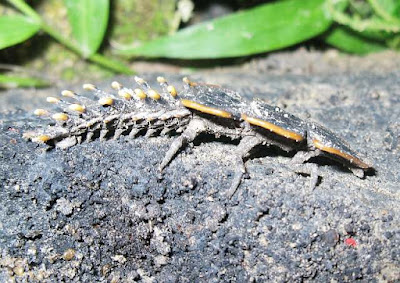



















































































































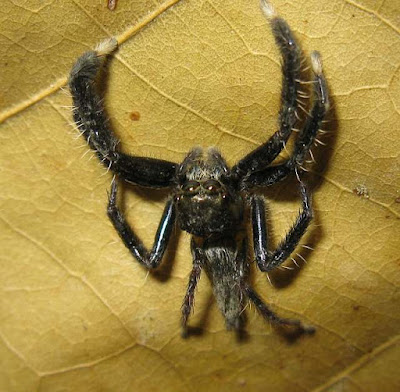




































































































































































































































































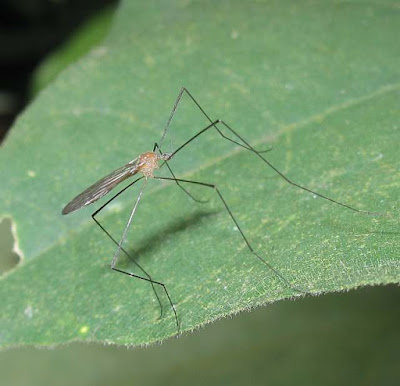






















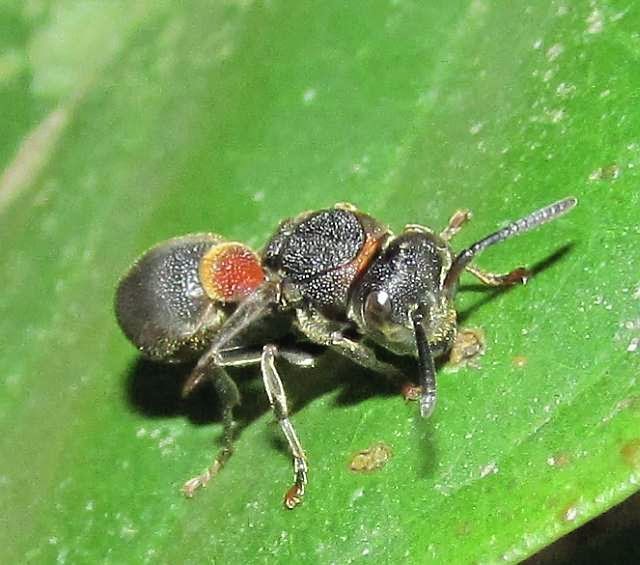

























































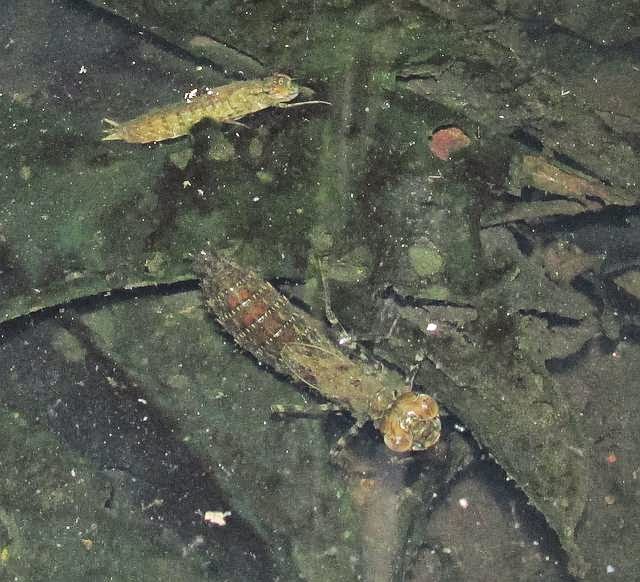

















































































































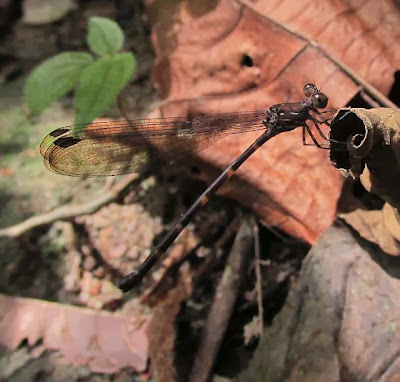















































No comments:
Post a Comment
Sorry Guys, Google Chrome or Blogger bugs prevent me from replying to comments again. It keeps telling me to sign in (even though I am always sign in) but when I click to sign in, it tells me "Unable to sign in check Google profile'. So sorry I can't reply to your comments.
Alternatively you can sent me an email if you are in need of answers.
Note: Only a member of this blog may post a comment.